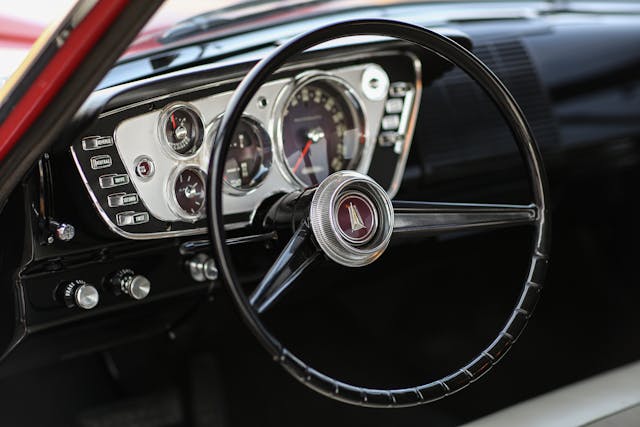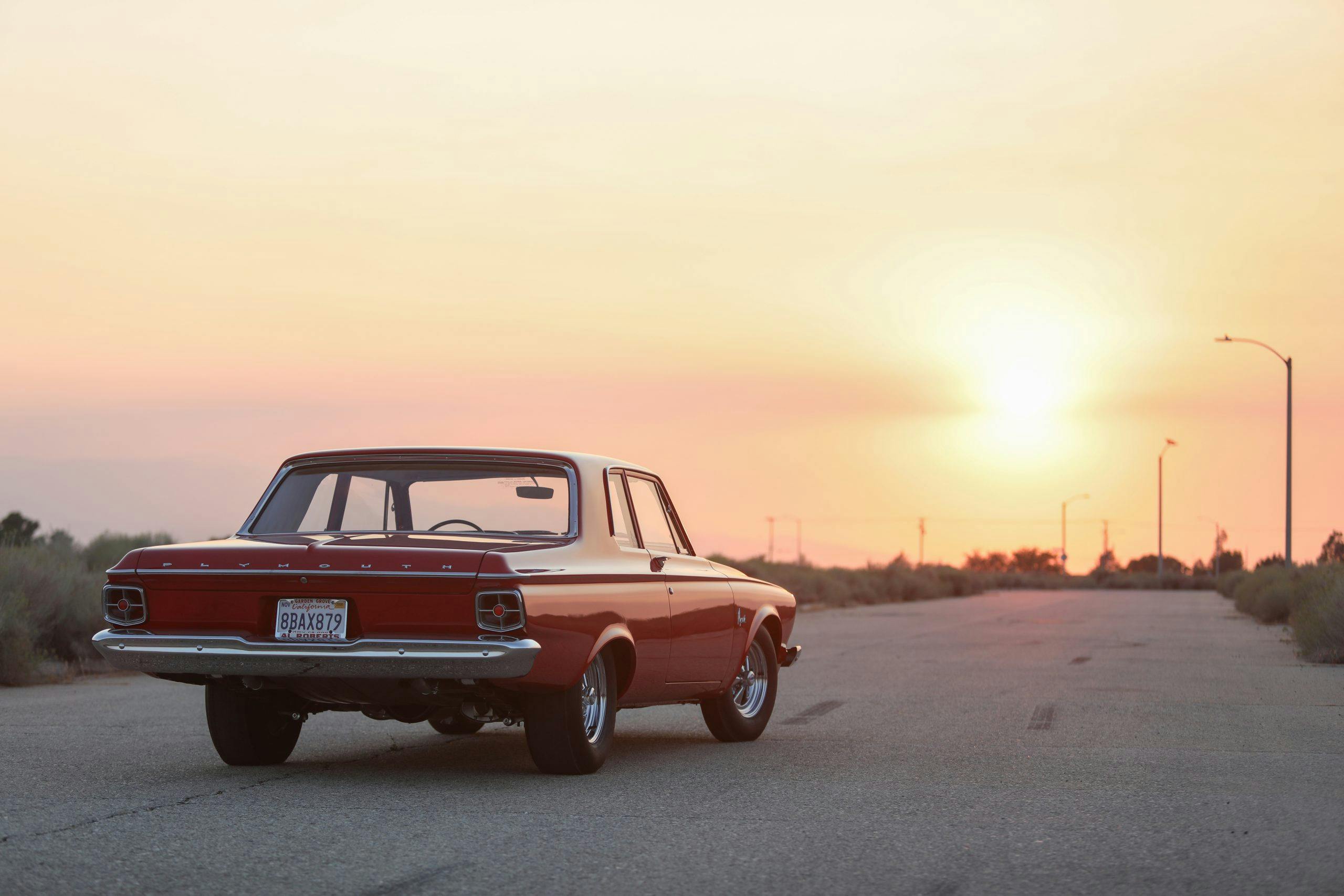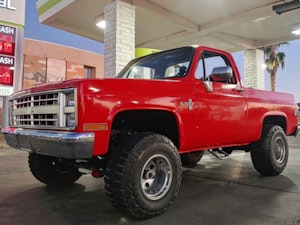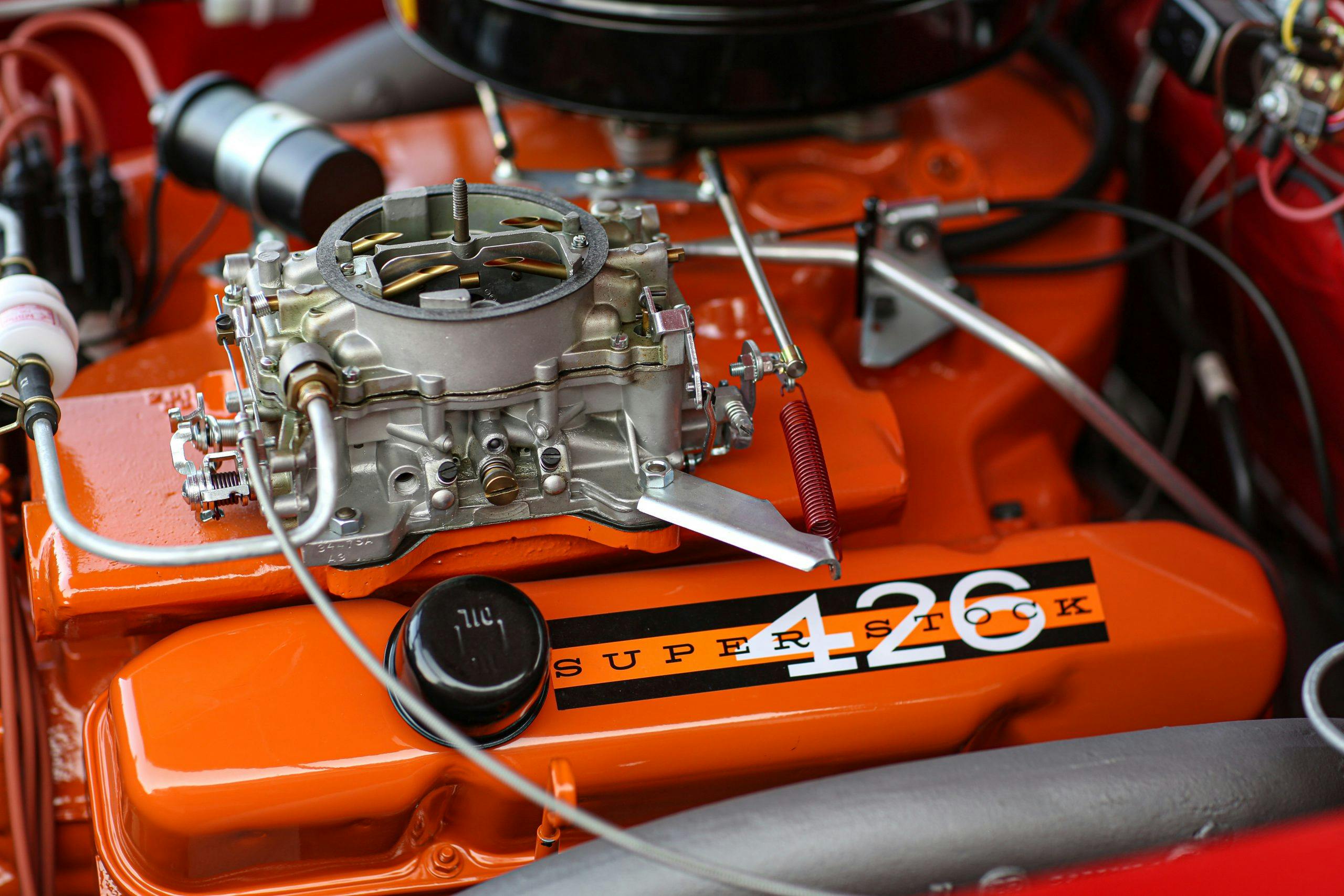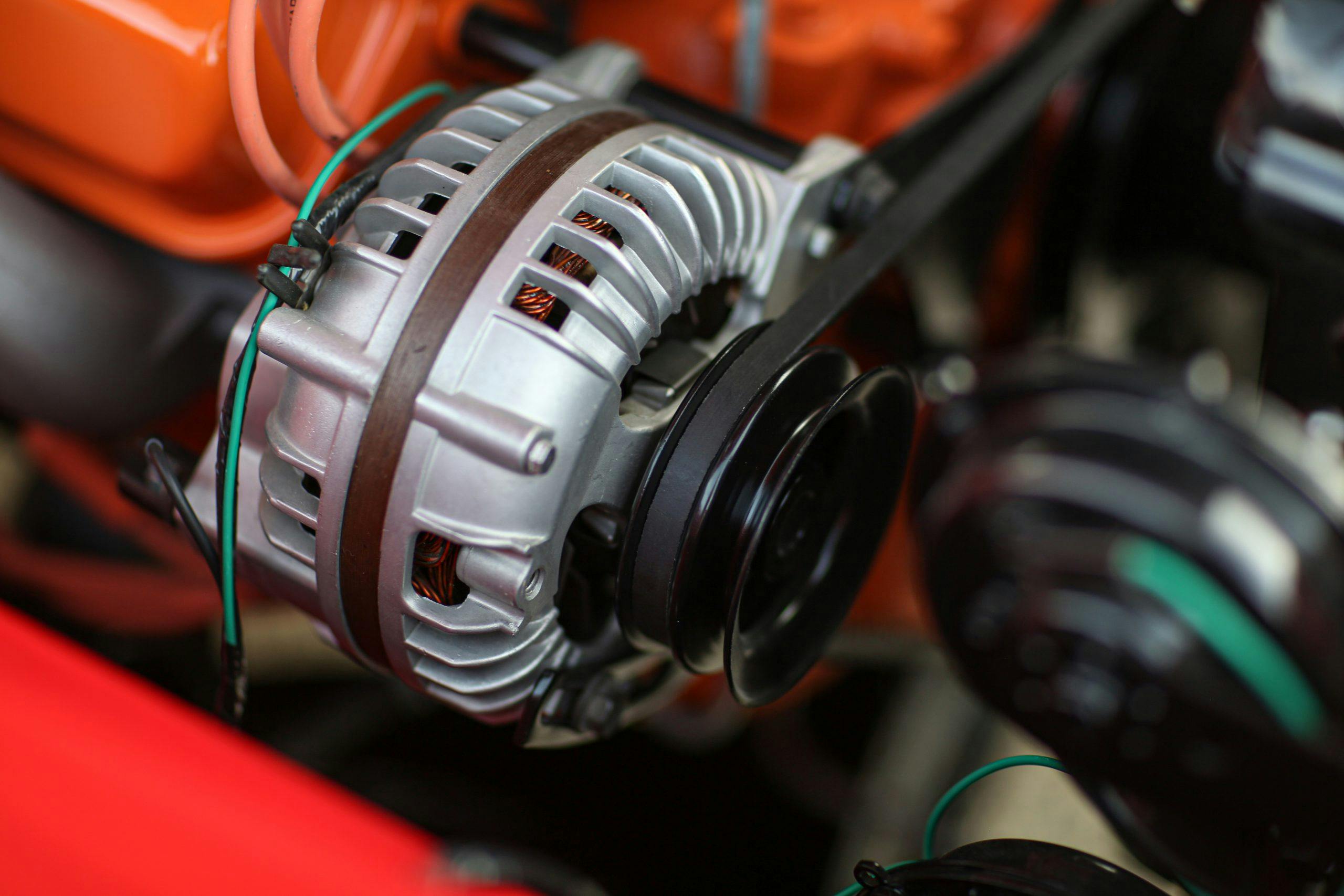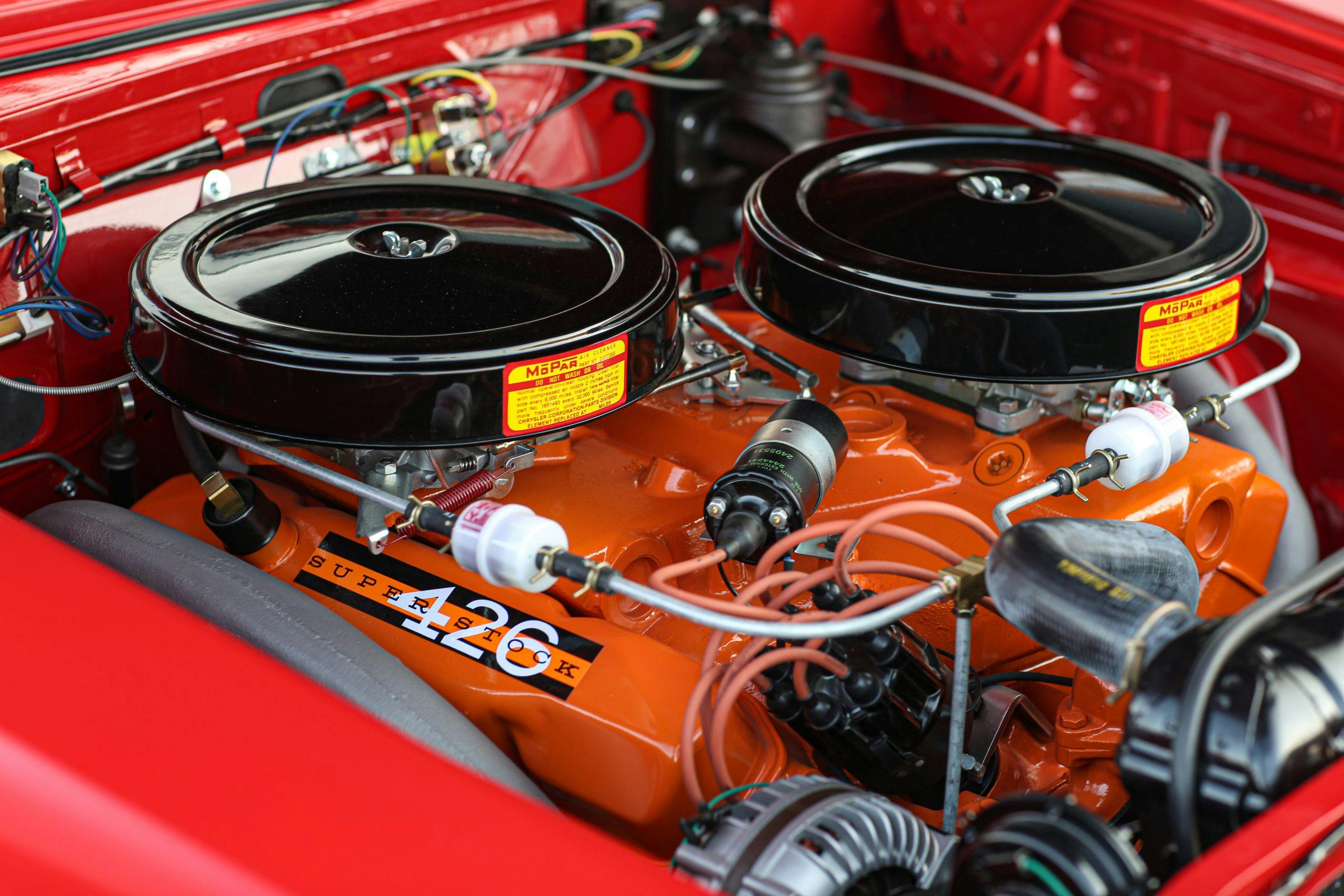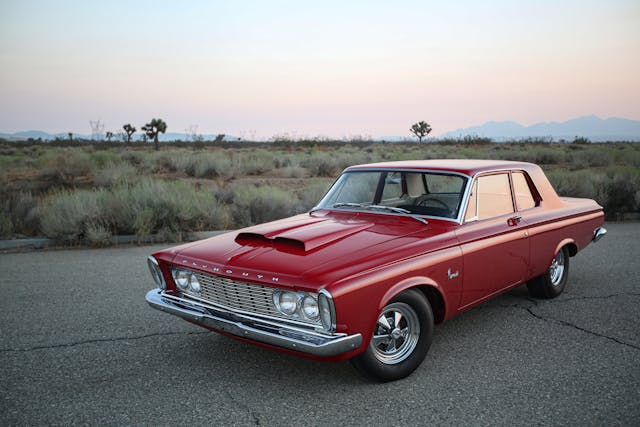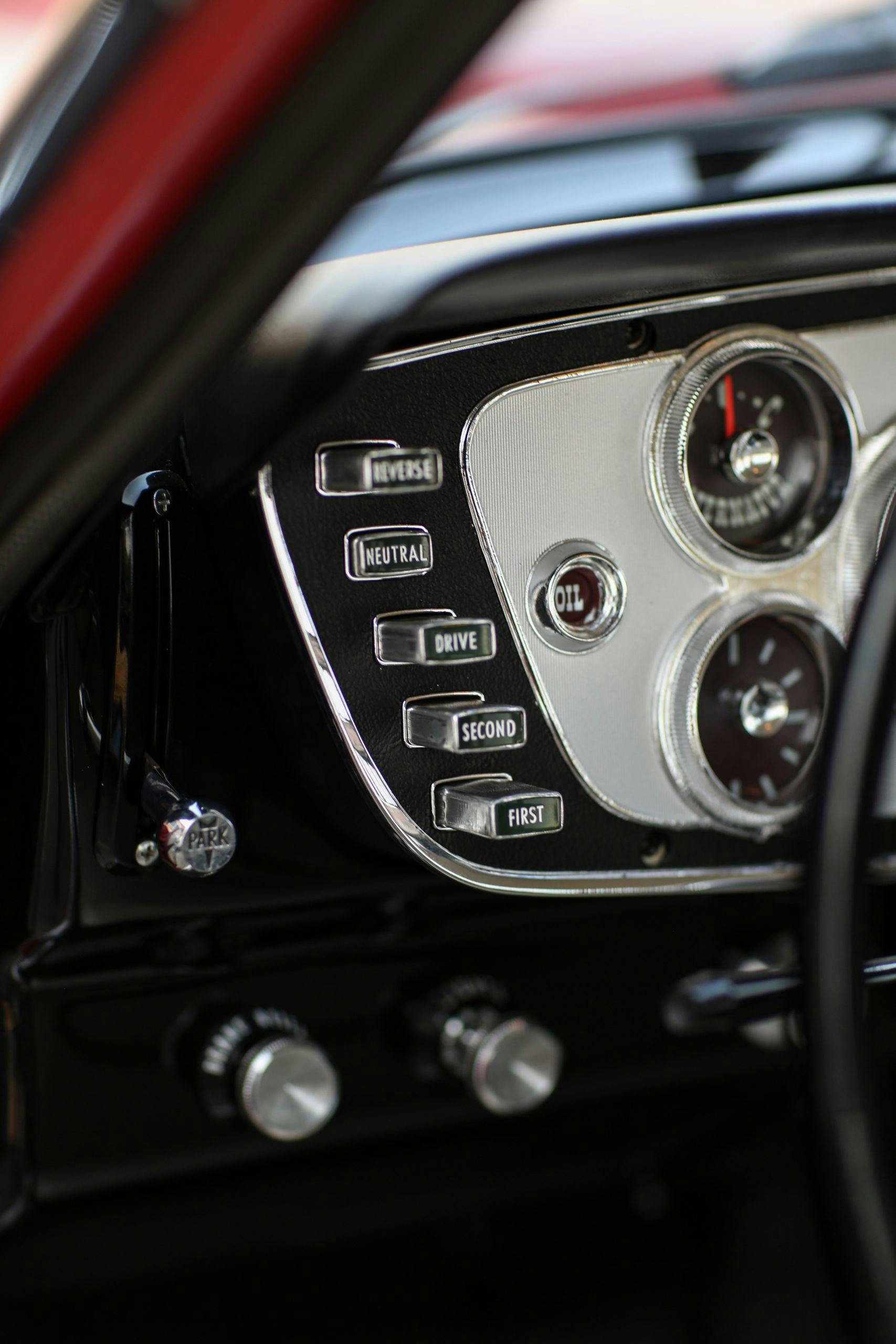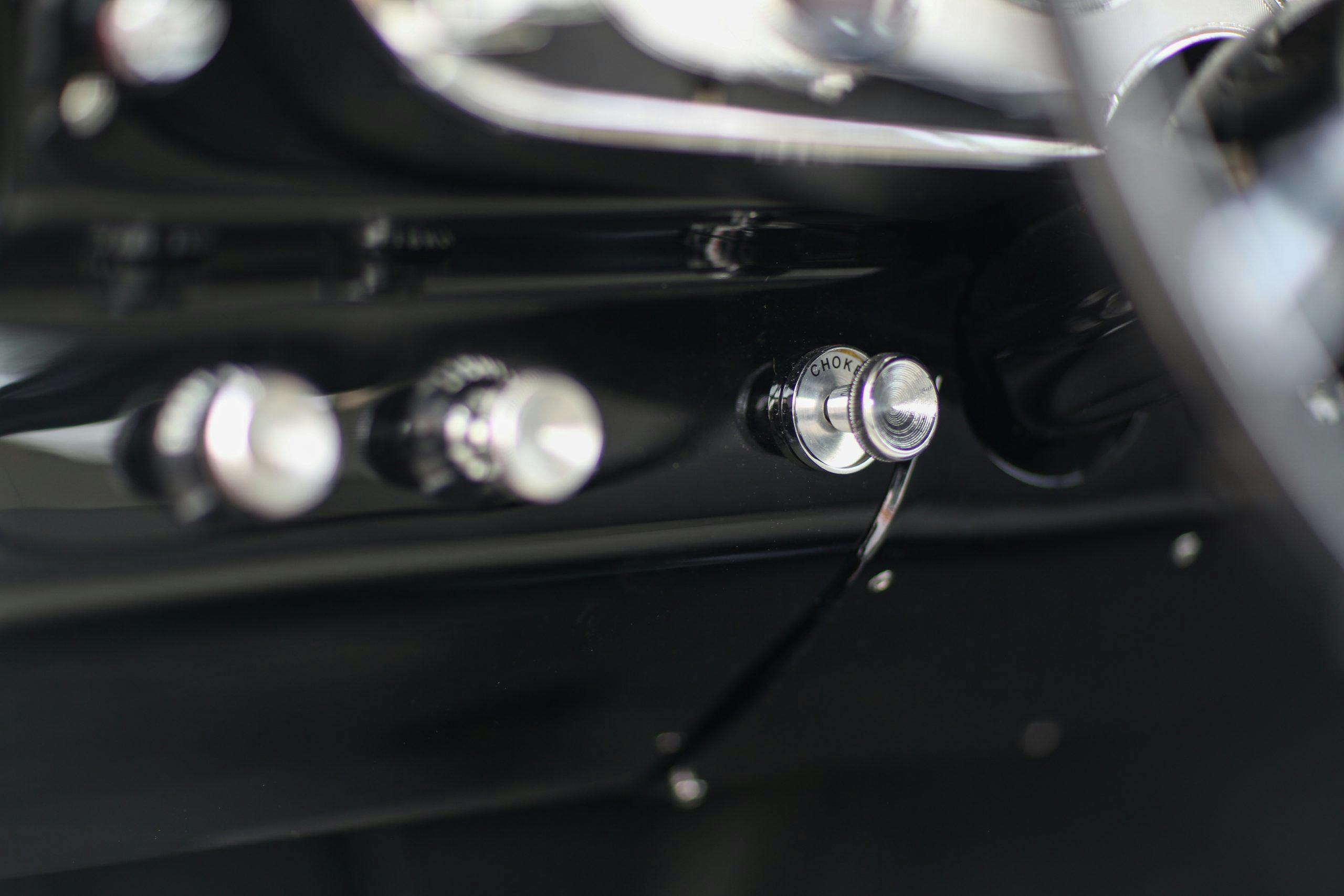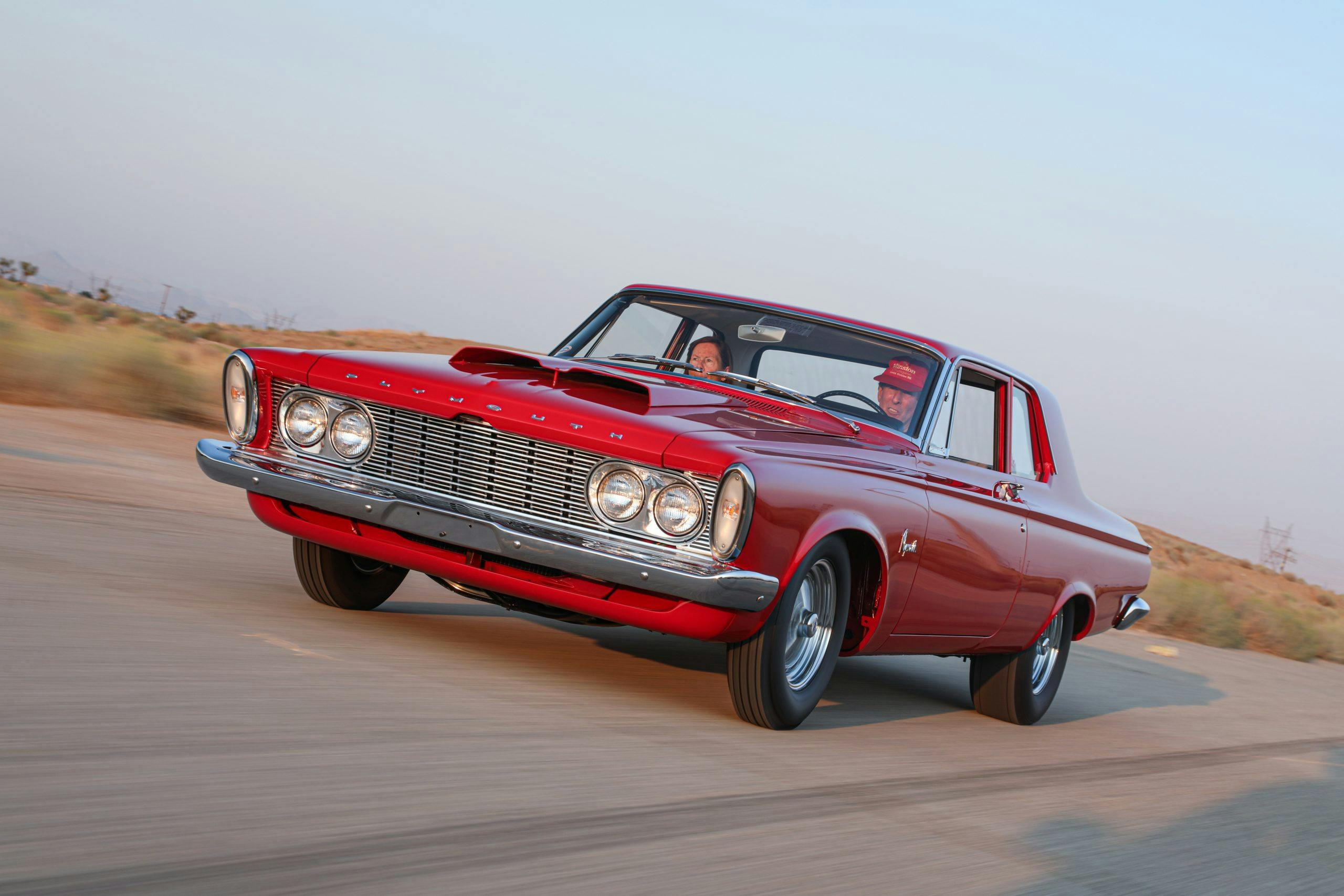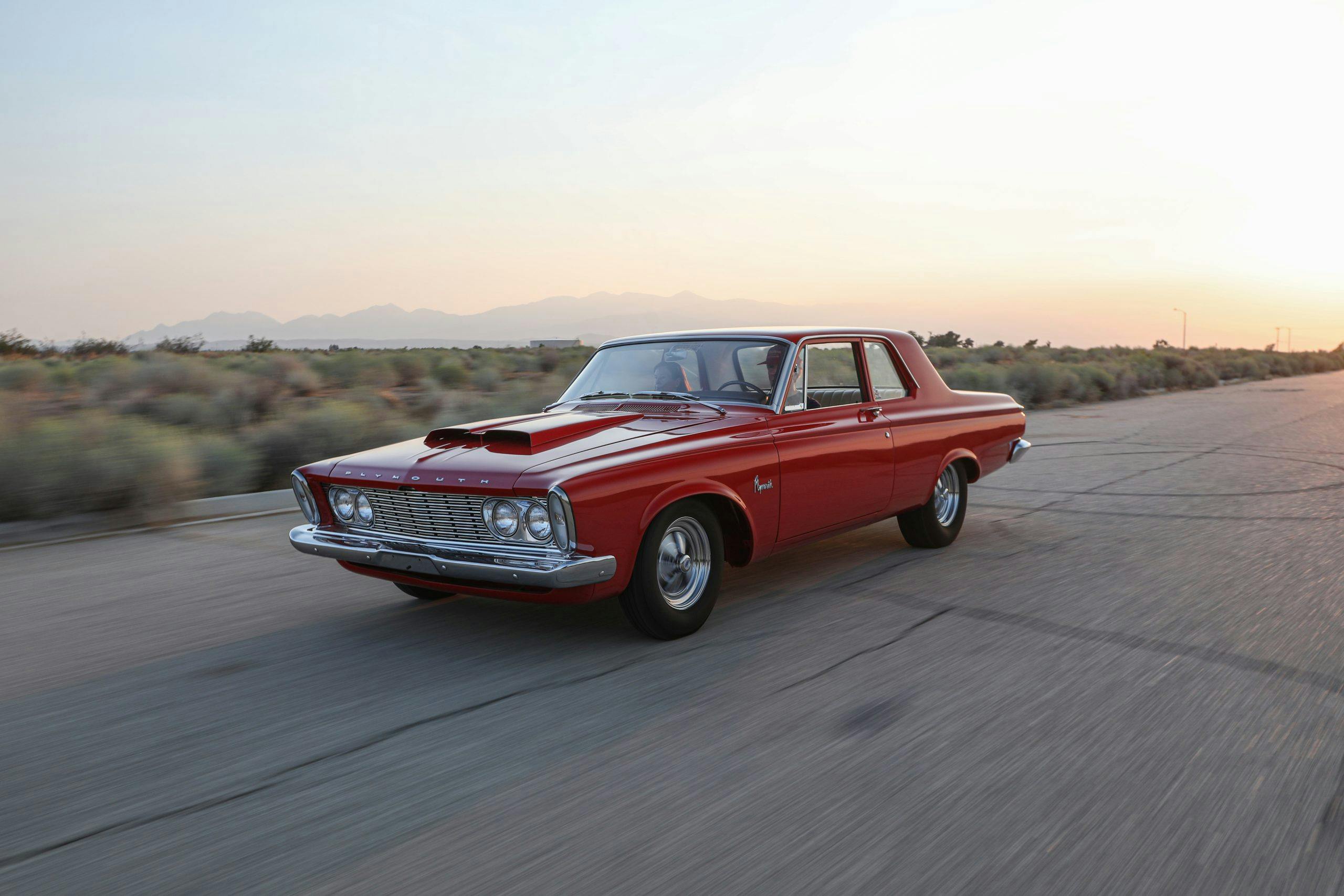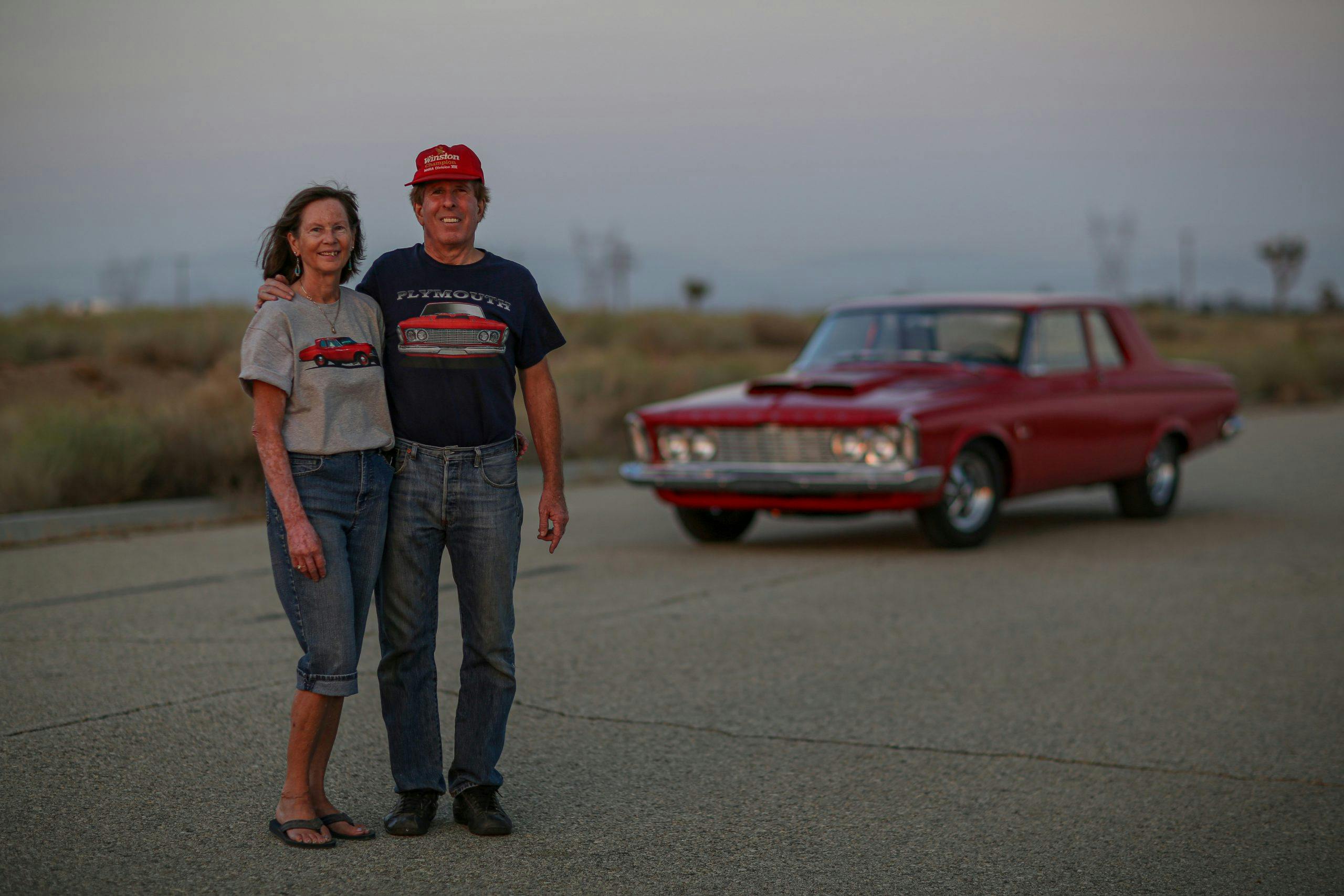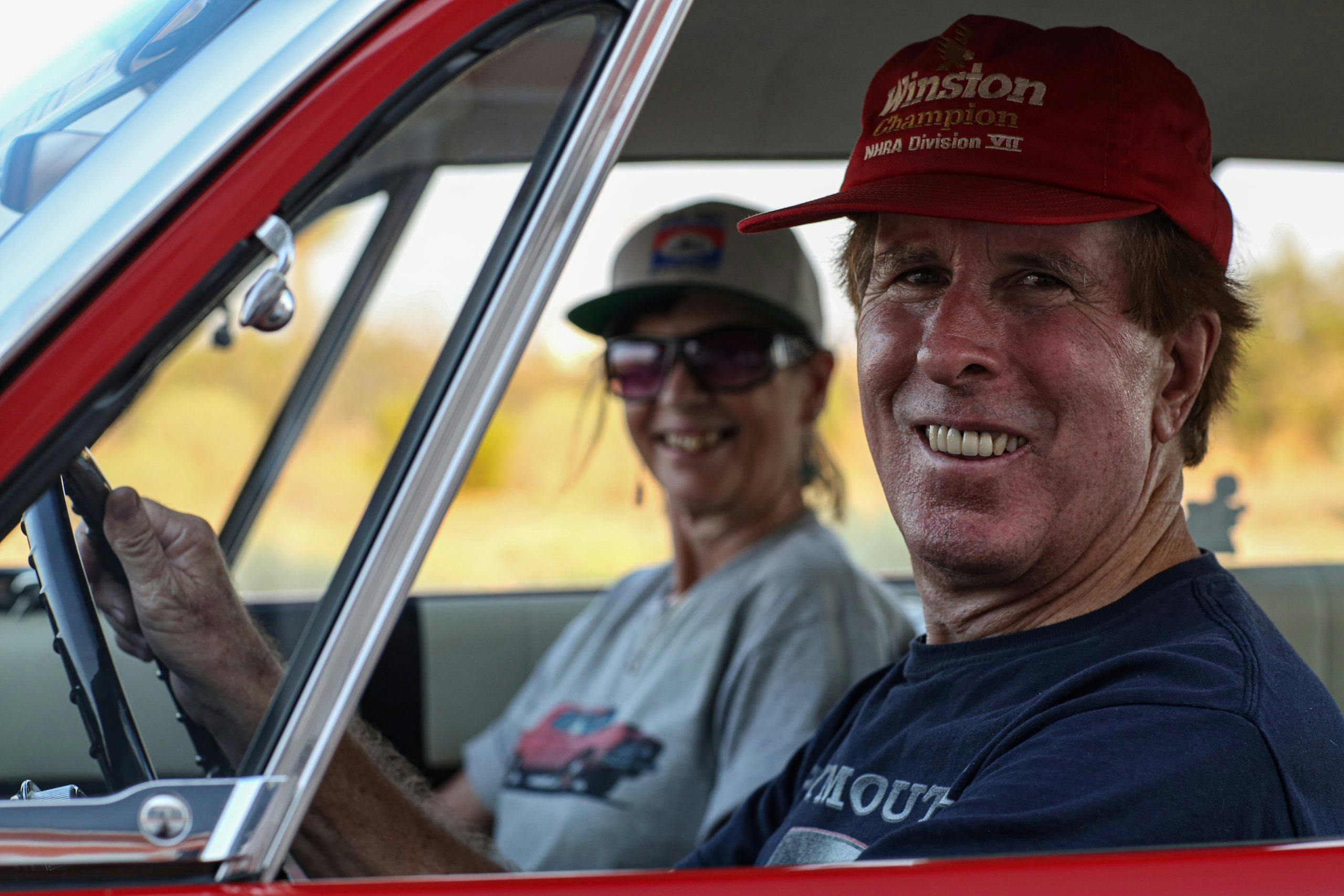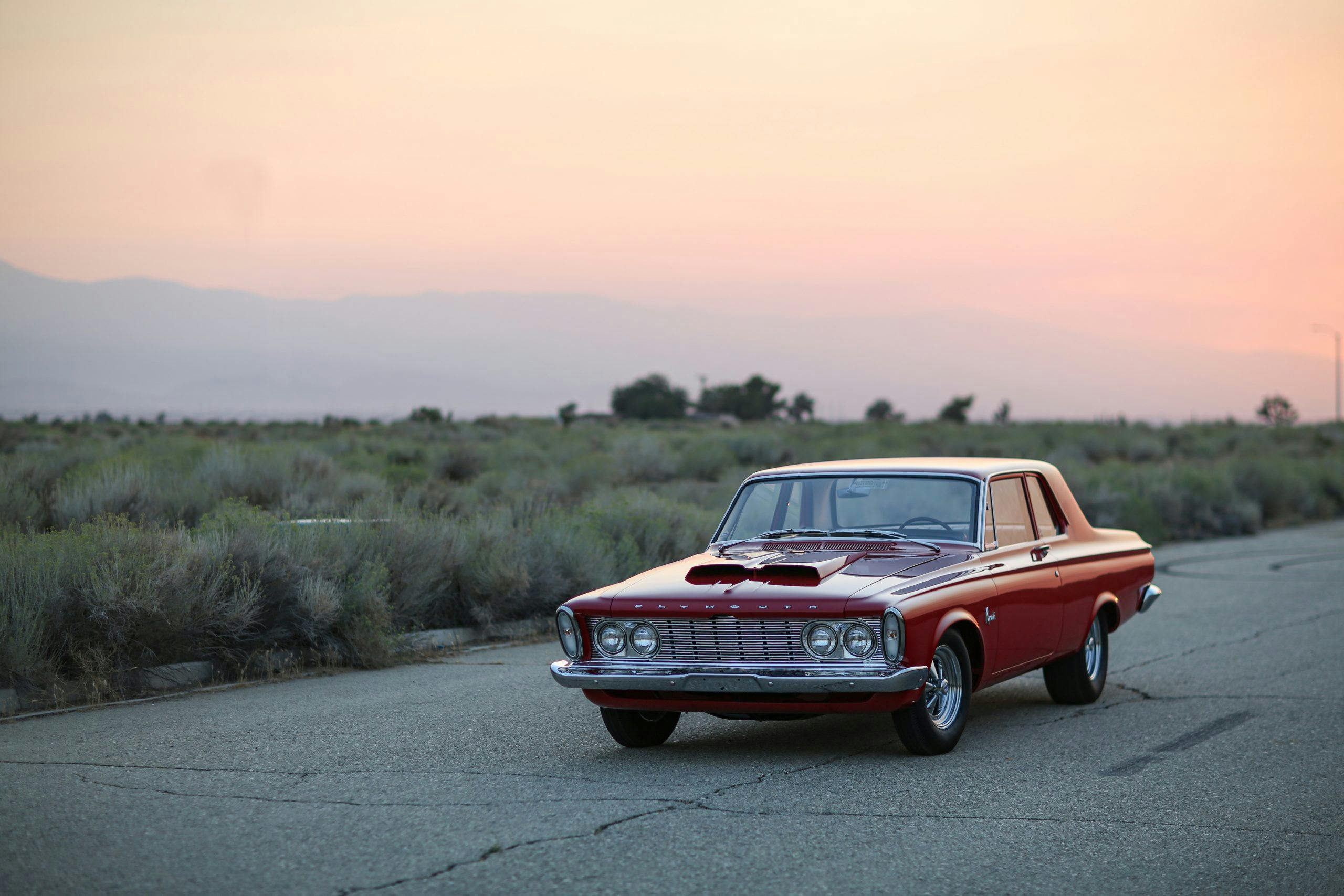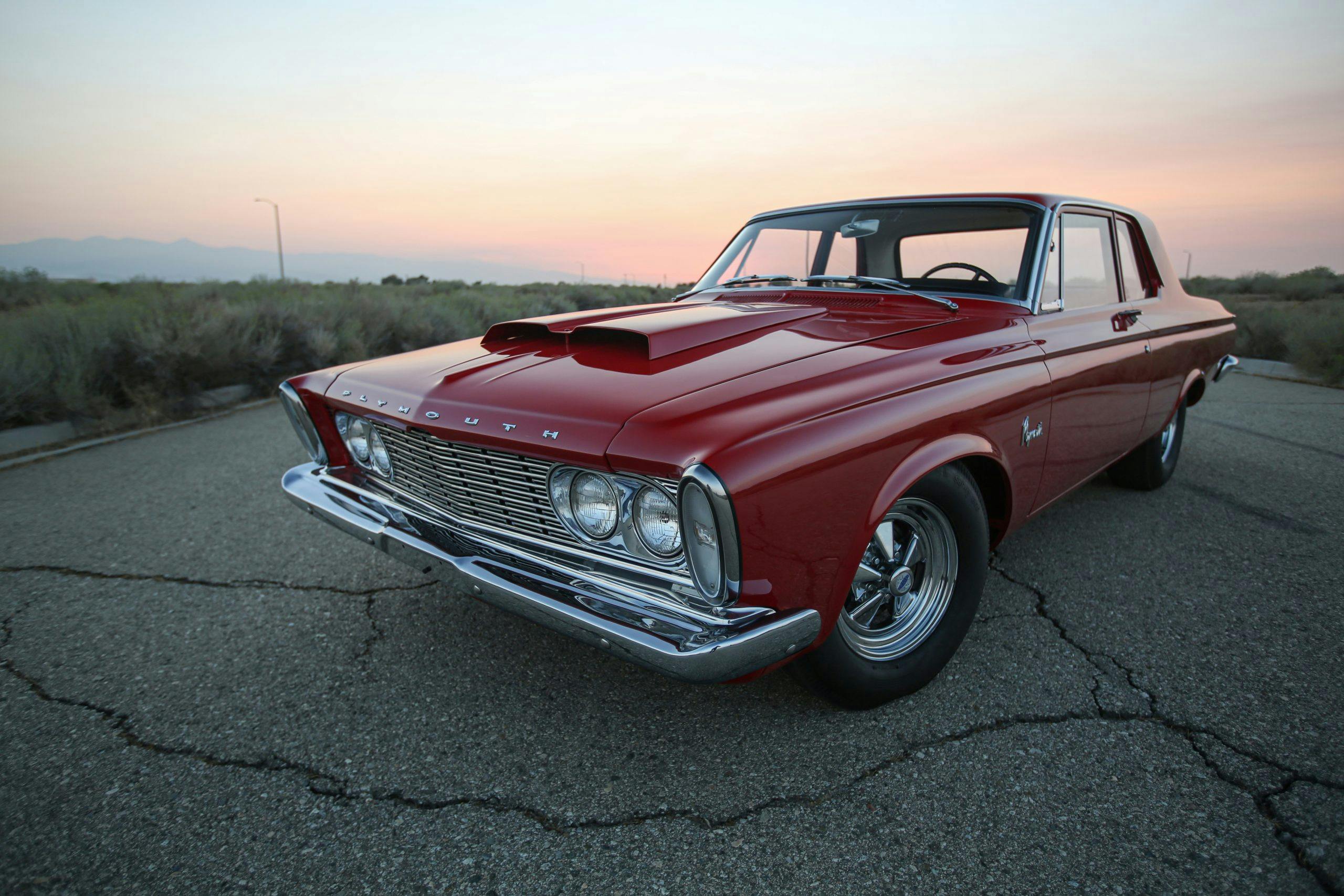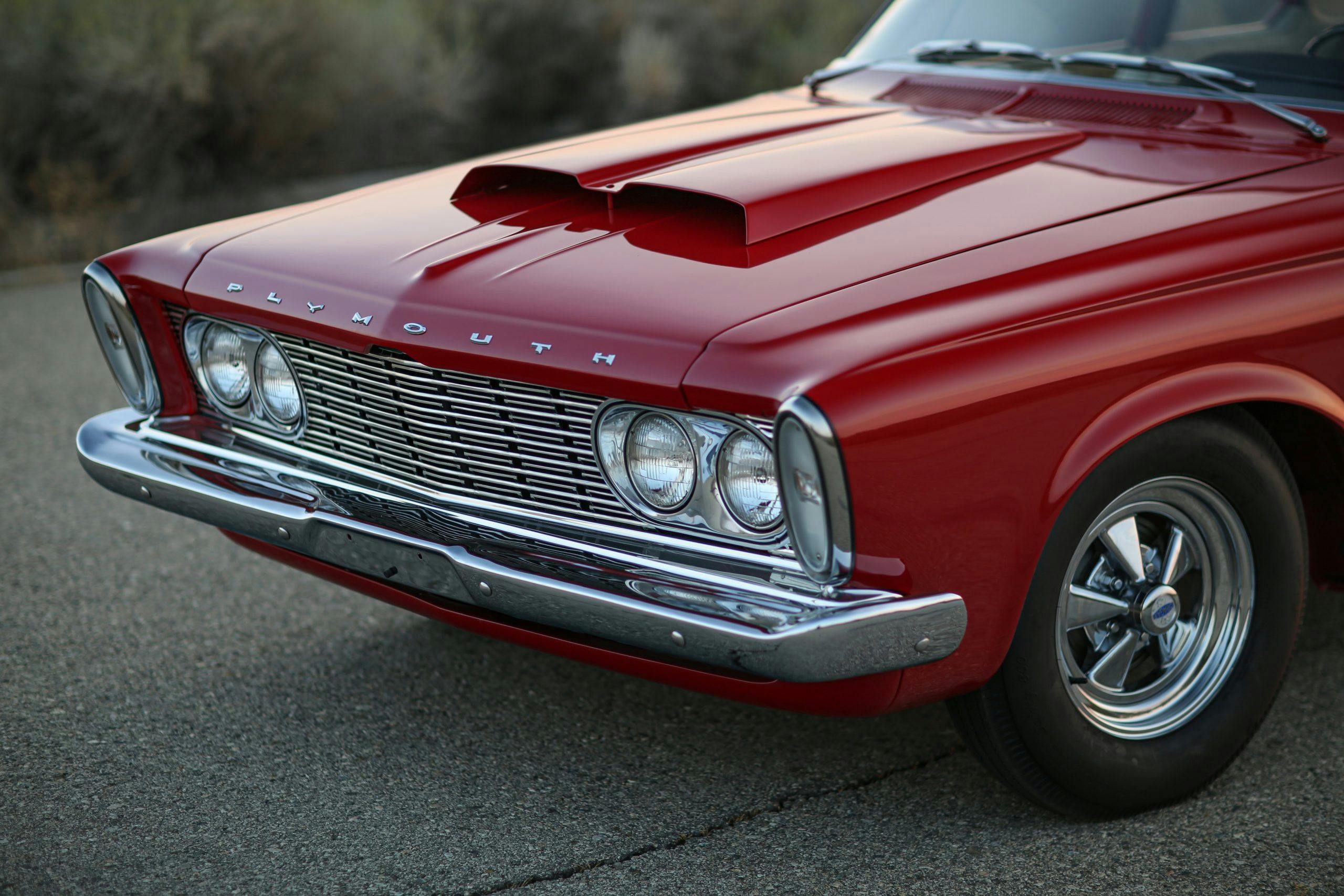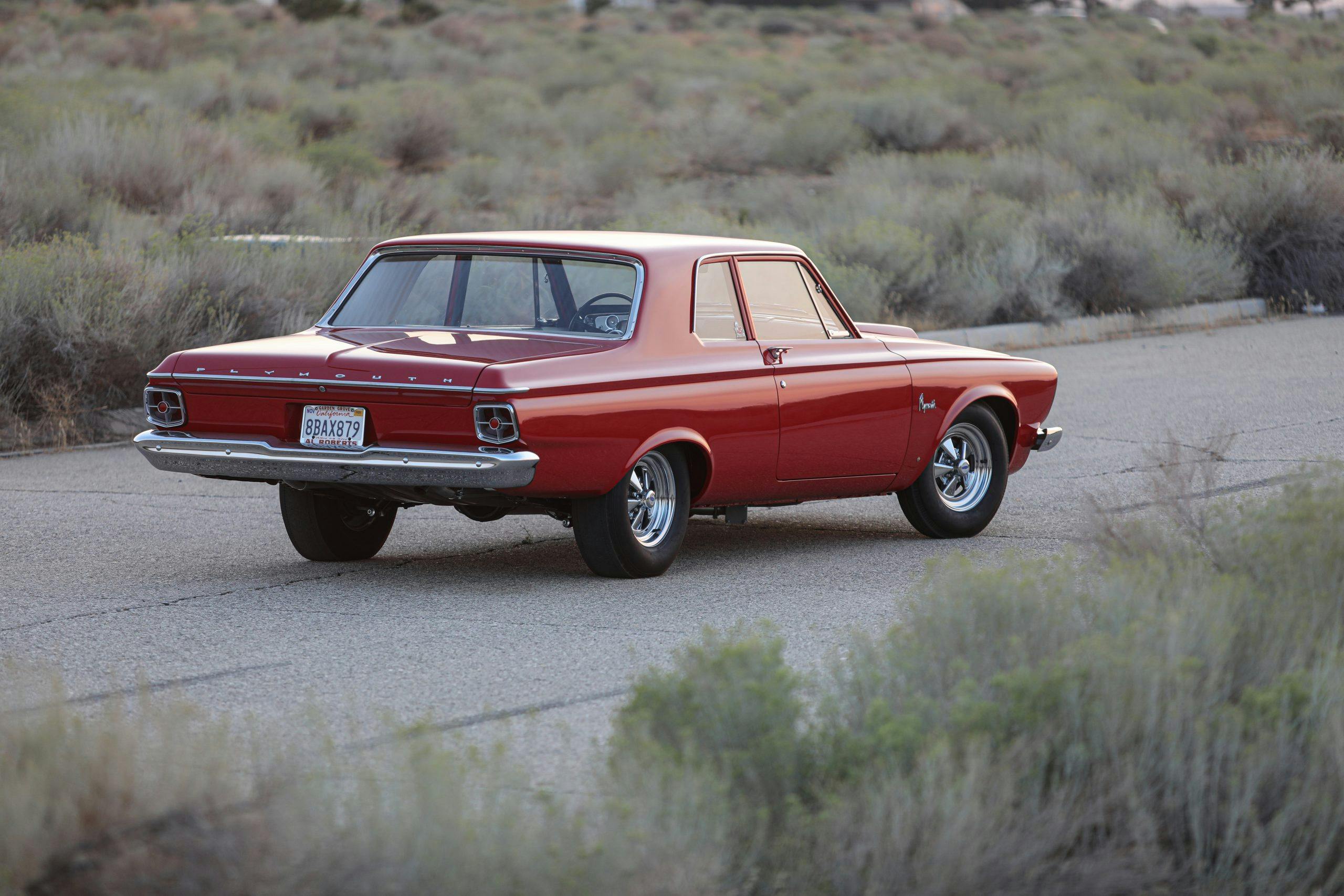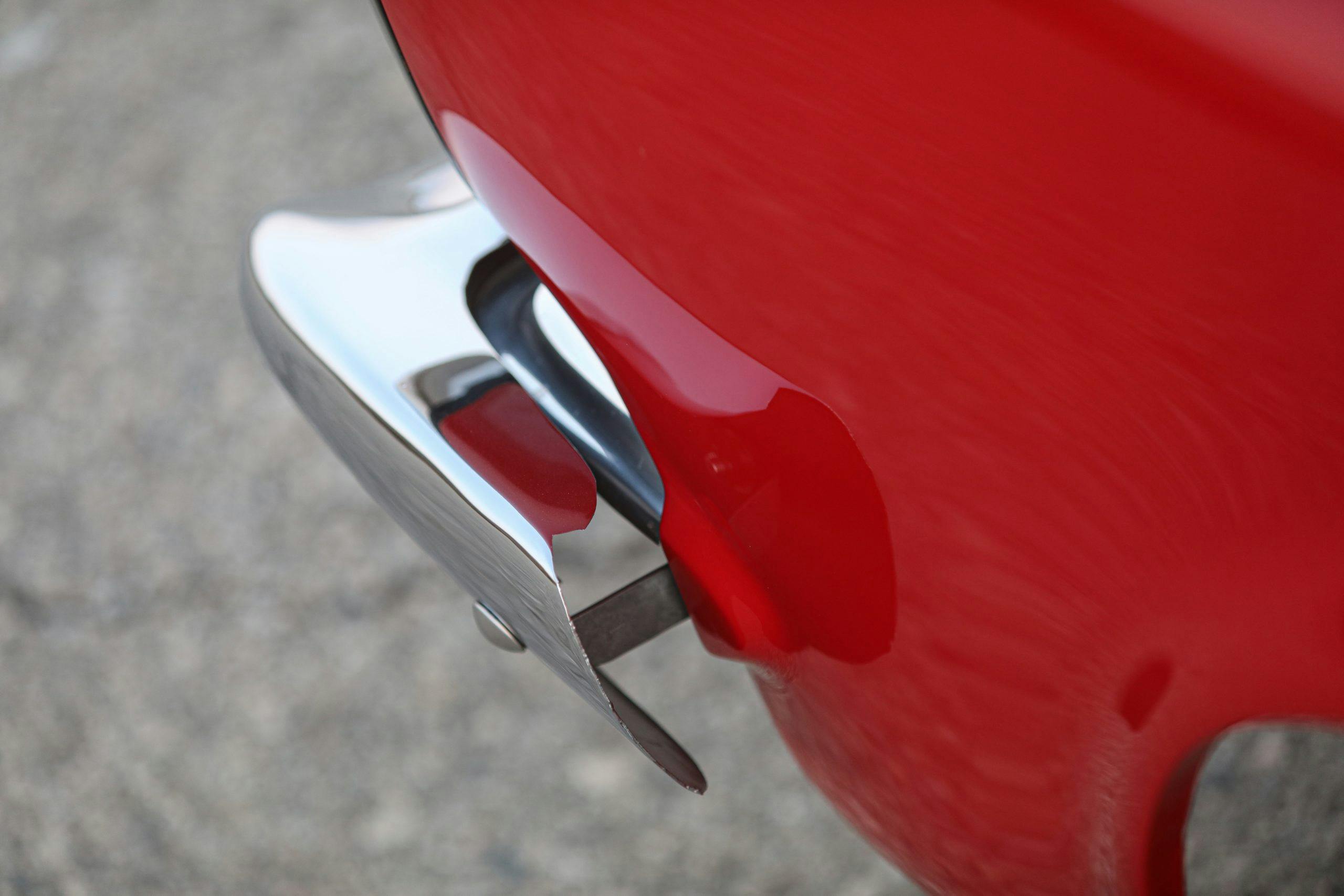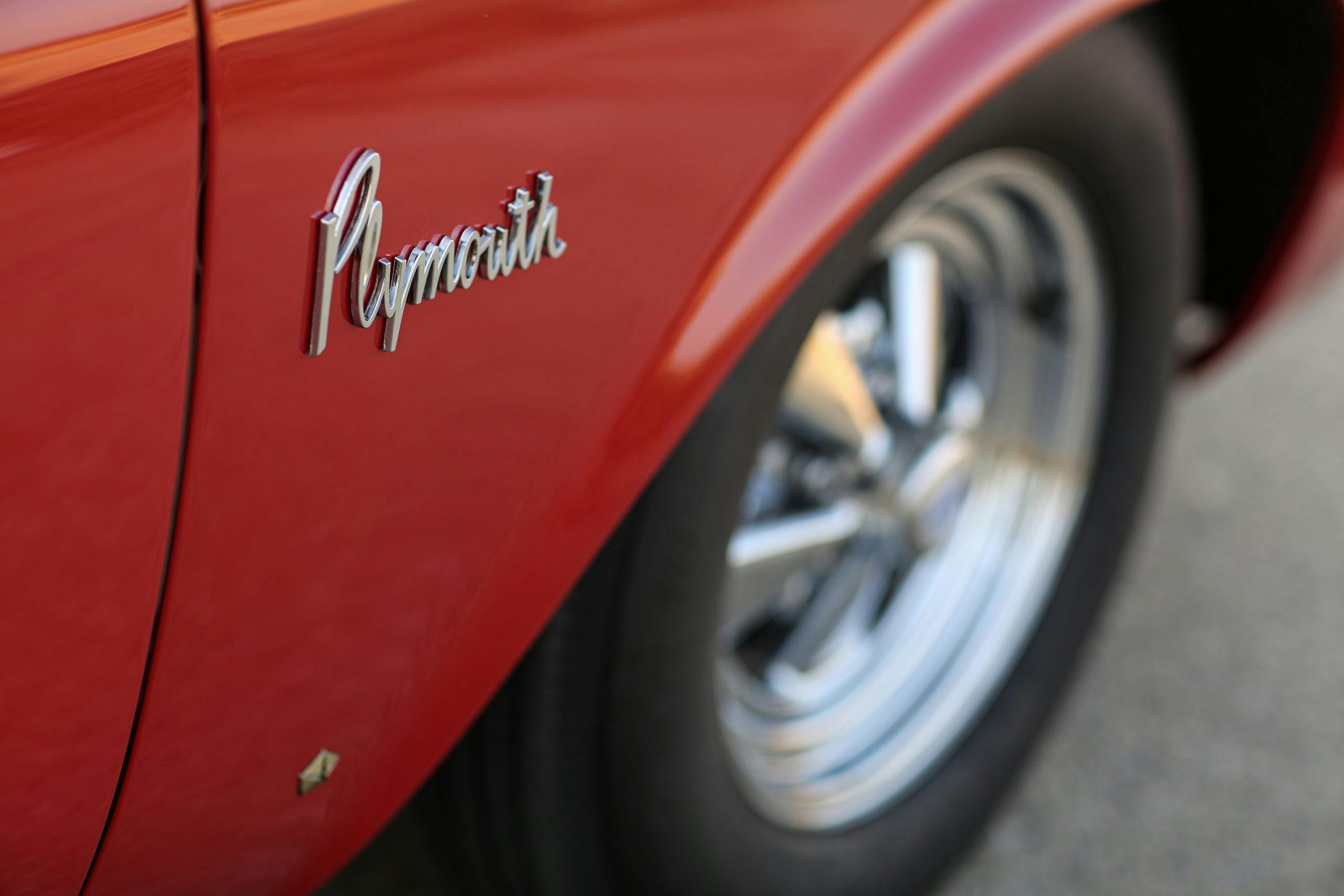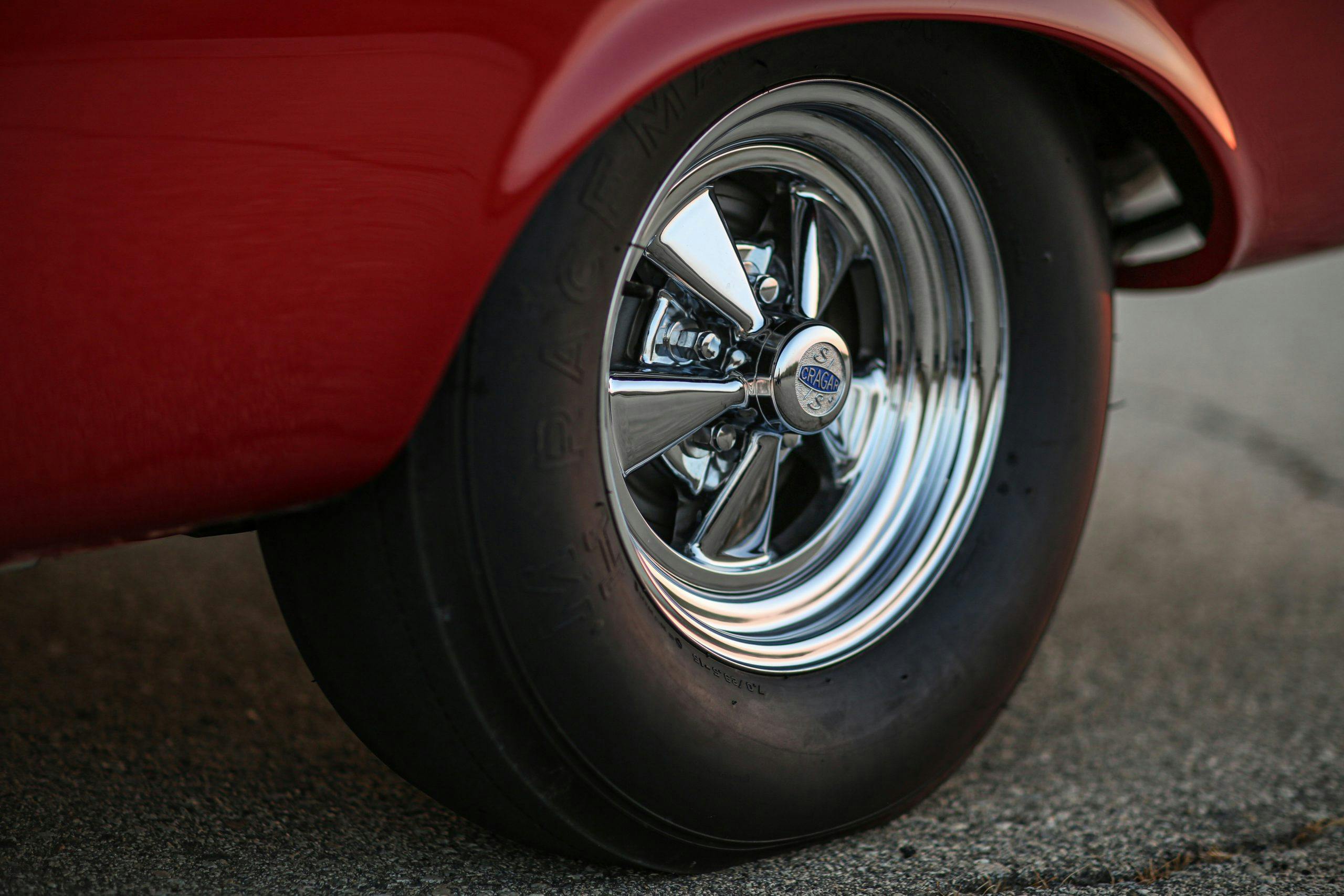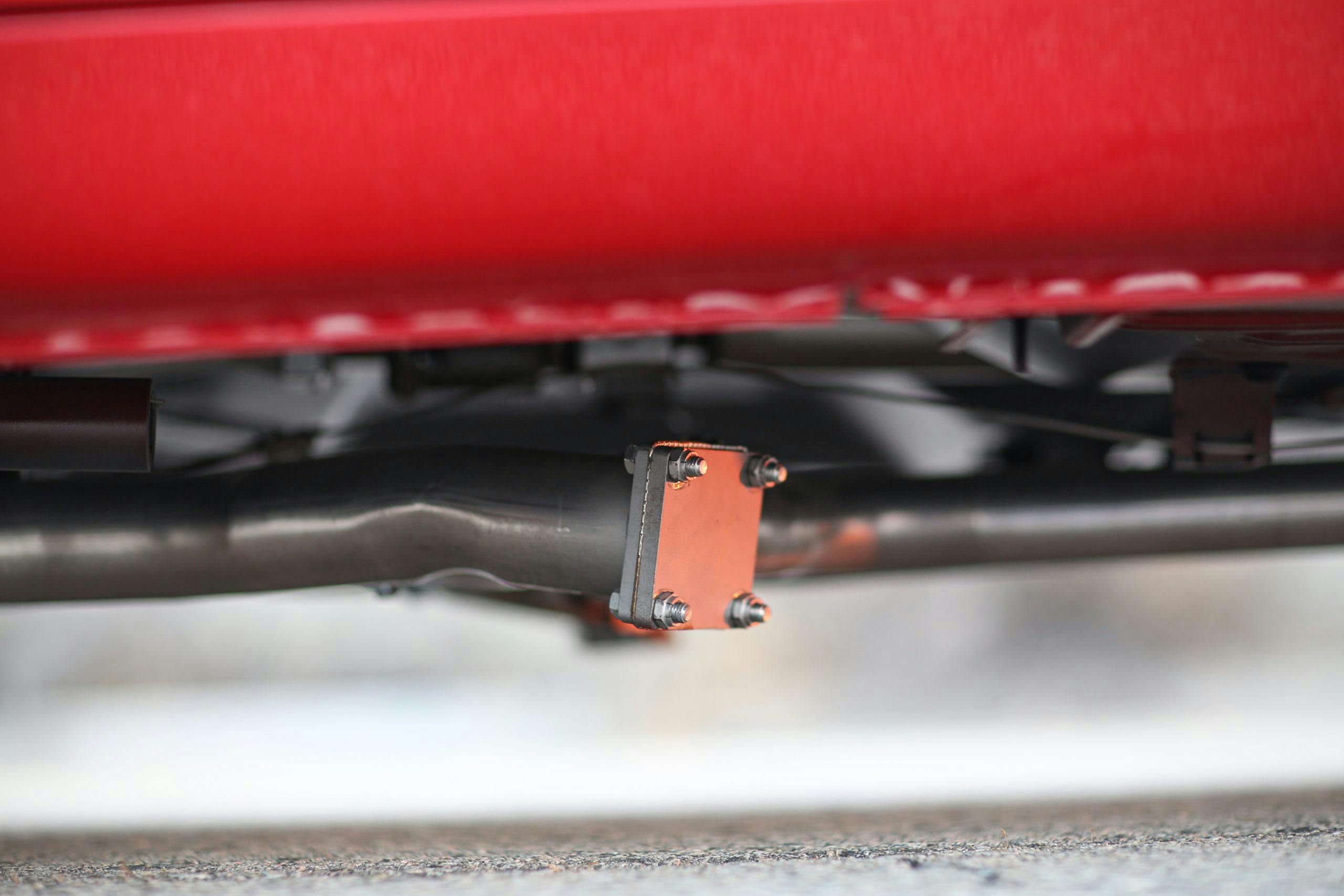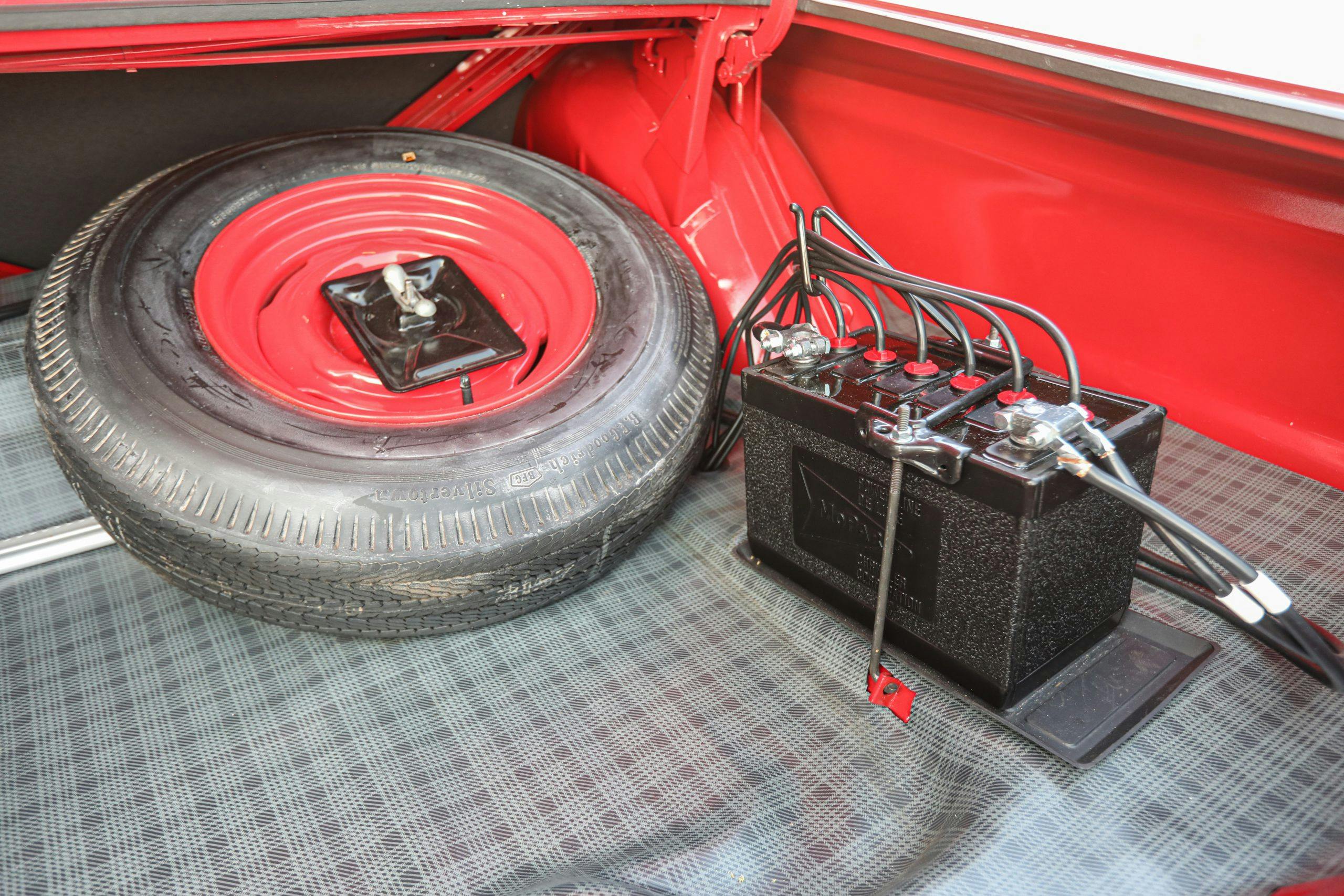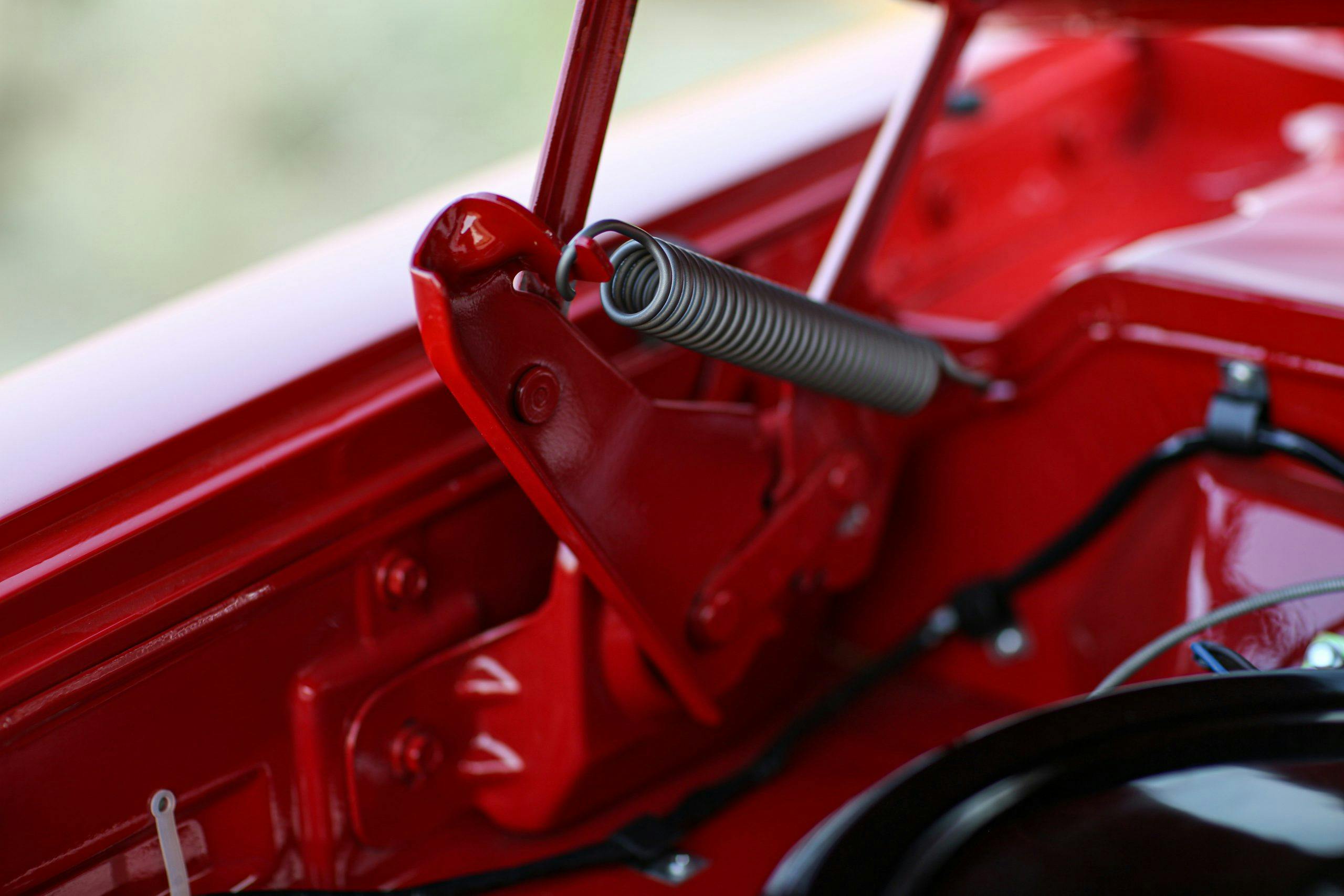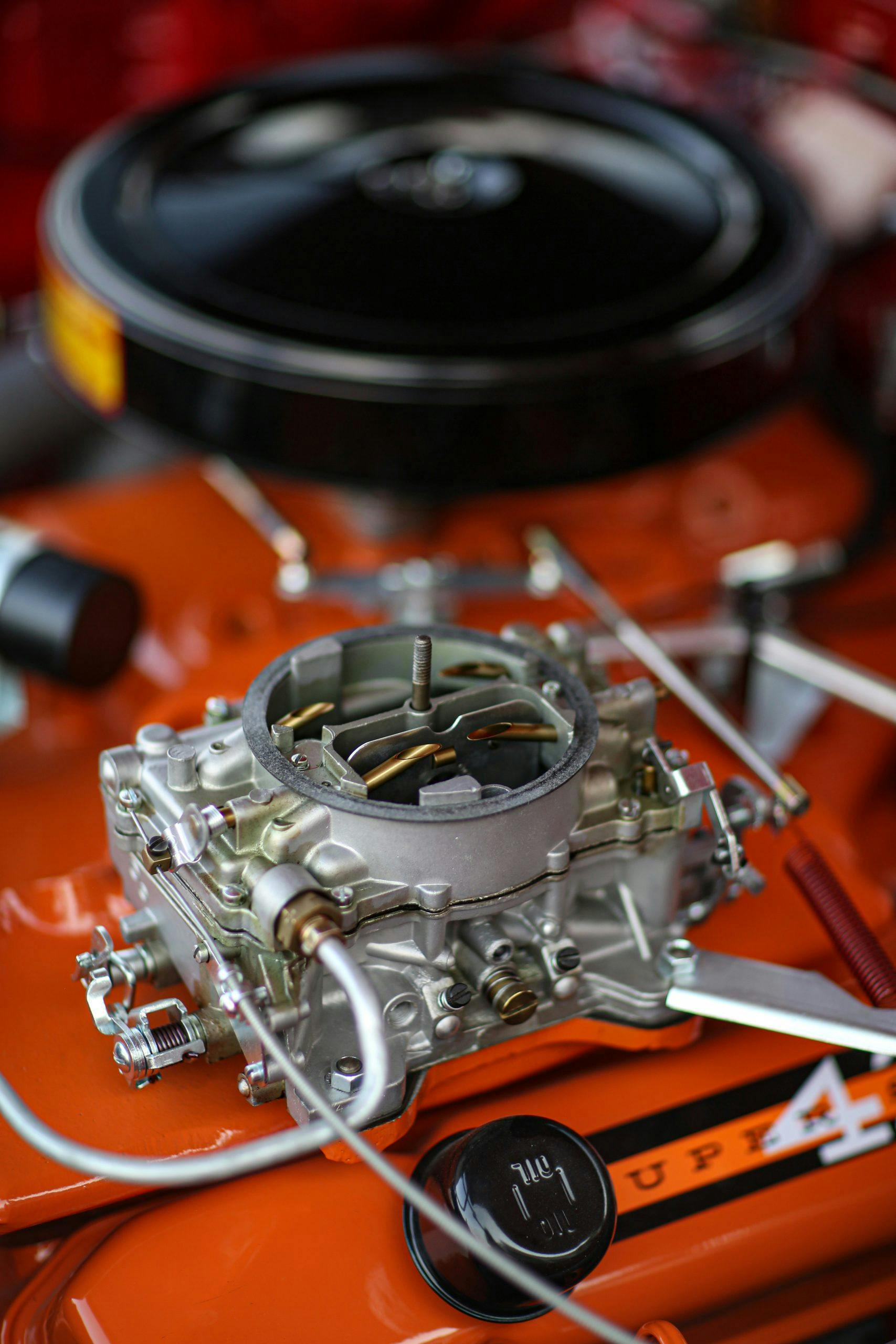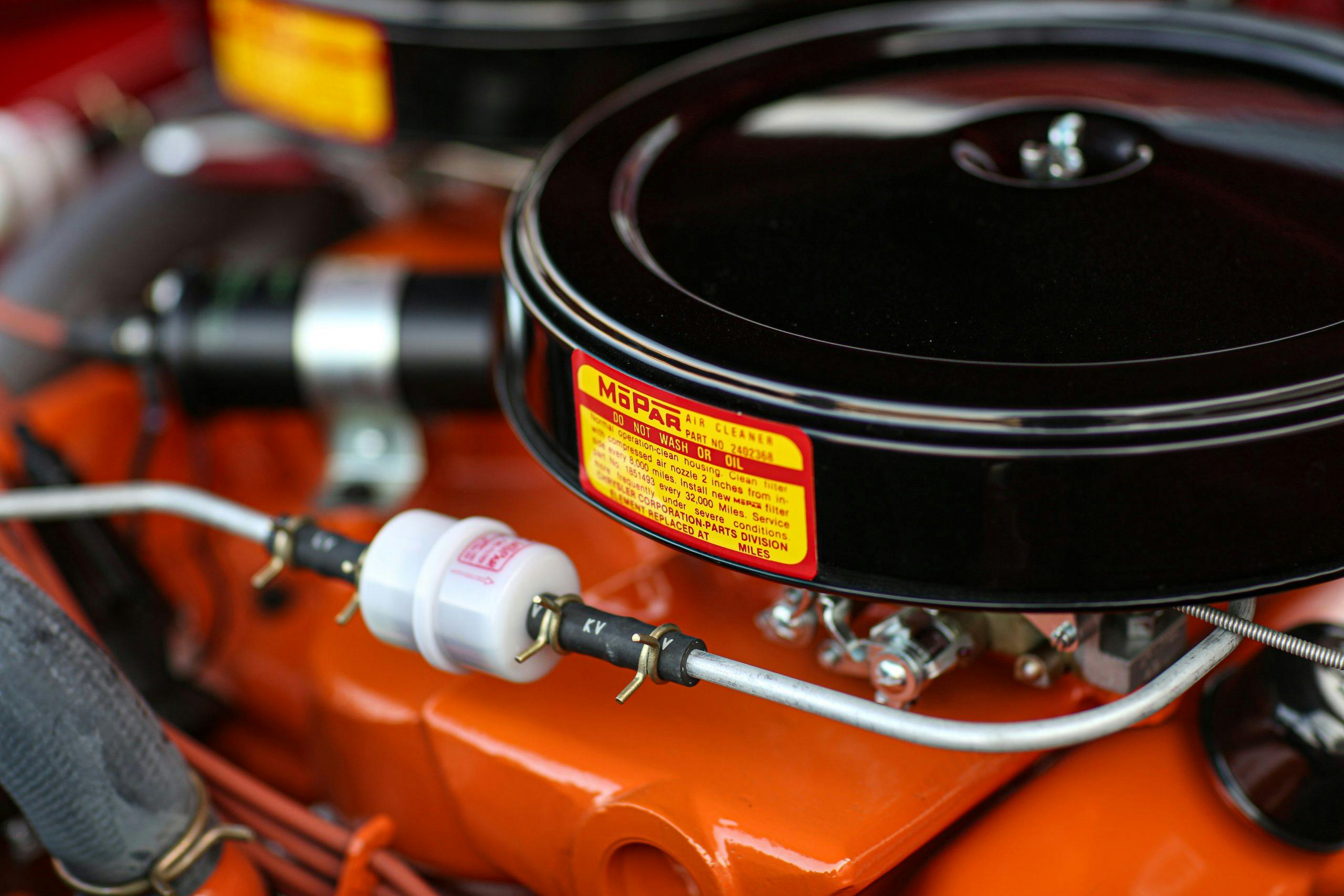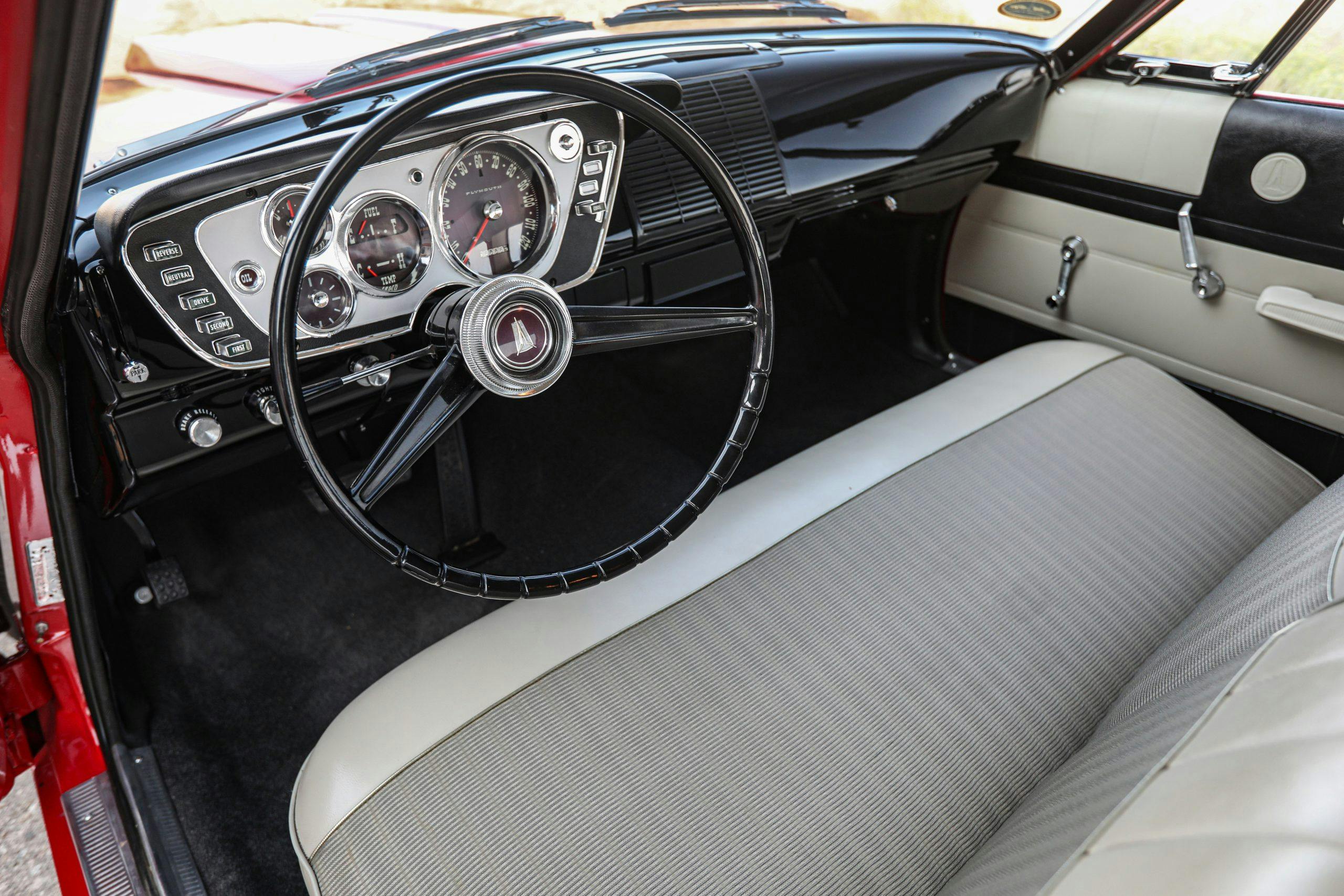Media | Articles
This Savoy is Mopar’s link to super-stock stardom—and my connection to my dad
From 1961 to ’64, my dad Fred worked at Al Roberts Plymouth in Garden Grove, California, where he managed the used-car lot. In the first year or so that he worked there, Al Roberts tried several times to get my dad to take a new Plymouth as a demonstrator that he could drive for free. My dad said that he liked Al and liked working for him, but he preferred his own Oldsmobile over the new Plymouths, which he considered kind of ugly.
When dealer memos appeared in 1962 announcing the upcoming 413 Super Stock package, as a joke, my dad told Roberts he’d take a new super stocker. Roberts responded by asking him which model, what colors, and what options he wanted. Dad answered each question, assuming Roberts was kidding. He didn’t give it another thought until Roberts called to confirm that his demo order was received and the car would be delivered in six to eight weeks. At that point, my dad told me he was in a mild state of shock, never expecting that he was being taken seriously, let alone that Roberts was actually going to order him a factory race car.
The night the white ’62 Savoy arrived, my dad took my mom and me for a ride. Once out of town, he stood on it a bit. I was 7 years old, but I’ve never forgotten the feeling of being pushed back in my seat as my dad shifted by pushing lit buttons on the dash.
He took it to nearby Jardine Headers for a pair of fender-well headers and tow-bar brackets, and with a set of Casler recap “cheater slicks,” my dad and the Plymouth were soon racing on most Sundays at Lions, San Gabriel, and Pomona drag strips.
He traded for a new ’63 when those arrived, now with a low-compression (11:1) 426, and gave it the same race-prep treatment as the ’62 had. He reached the quarter finals of Mr. Stock Eliminator at the 1963 NHRA Winternationals in that car, with a 12.25 at 116 mph. About a month later, he switched to a faster Belvedere with a high-compression 426. Dad already knew he was leaving Al Roberts Plymouth to open a speed shop with a partner, though, so he bought his own super stocker, a car he could keep for himself. This ’63 Savoy factory super stocker, with a high-compression 426 and an aluminum front end (1 of 50 so equipped), is that car.
Marketplace
Buy and sell classics with confidence
The red Savoy proved the fastest of the four super stockers my dad raced. Like other factory race cars, it came with a booklet that included specifications. It explained that the car was built “for sanctioned acceleration trials” and was not built to be, or suitable to be used as, a daily driver. With another visit to Jardine and some race prep at Hayden Proffitt & Associates, he had great success in the NHRA’s AA/SA class (later A/SA) through 1966, winning events all over Southern California.
In spring 1965, the NHRA national record was 12.36 seconds at 116 mph; Dad ran as quick as 11.86 at 120.16 on 7-inch tires. The biggest name in AA/SA and A/SA back then was factory-sponsored Ford racer (and 1964 NHRA Junior Stock world champion) Mike Schmitt, who campaigned a very fast ’64 Ford Galaxie lightweight powered by a 427 High Riser. Schmitt and my dad raced in six heads-up pairings in 1965–66, and Dad beat him six times. He continued to be competitive for several more years.
Then, early in 1969, my mom suffered two near-fatal strokes. Dad ran his last race in the Savoy that spring at the Hot Rod Magazine Championships, before selling it to help pay medical bills. I know it stayed in the California racing scene for a few years and then started changing hands among collectors in the mid-1970s; by that time, he and I were focusing on my own super stocker, a 1964 Dodge Polara 500, which we turned into a seriously quick racer. Sadly, Dad died in 1976, when he was just 50 years old. I’ve kept the Polara all these years in large part because of his involvement with it, but I always wondered what happened to his Savoy.
I got my answer in 2014, when I received an email from a guy in Montana who had recently purchased it. Somehow he’d learned I was the son of the original owner, and he was looking for more information on the Savoy’s racing history. We ended up becoming long-distance friends, and in 2017, when he told me he had his eye on an original ’68 Hemi Dodge Dart and asked if I wanted to buy back my dad’s car, I couldn’t say yes fast enough. Three weeks later, the transporter unloaded the red Savoy in front of my house. I hadn’t seen it in person since the 1971 NHRA Winternationals.
The car is still 100 percent as produced, its 13.5:1 426 Max Wedge fed by a pair of Carter AFB carburetors on a cross-ram intake manifold, with forged pistons and heavy-duty forged connecting rods, a hardened crankshaft, and a special Torque-Flite transmission putting 425 horsepower to the rear wheels.
So many wonderful childhood memories are tied to this Plymouth. My mom passed away a few years ago, and my brother died in 1999, so it feels like the closest thing to family I have left. To have it in the garage again, now parked beside the Polara Dad helped me build, is beyond special.

